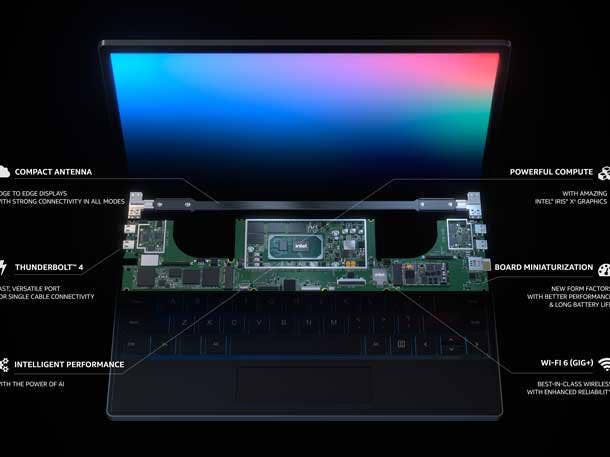Intel Reveals Visual Sensing Controller Chip For Smarter Laptops
The company calls the Visual Sensing Controller a ‘secure companion chip that helps make PCs more smart and secure through the power of Intel artificial intelligence.’ For example, it could be used to detect the presence of a user and automatically adjust the brightness of the screen.

Intel has revealed a new kind of low-power computer chip for PCs that is designed to detect users and automatically adjust settings using AI.
The Santa Clara, Calif.- based company disclosed the Visual Sensing Controller, code-named Clover Falls, in a Thursday column as a new component the chipmaker will use to help OEMs design and engineer premium laptops through its Intel Evo Platform, which was previously known as Project Athena.
[Related: New Microsoft Security Chip Will Go Inside Intel, AMD CPUs]
The company called the Visual Sensing Controller a “secure companion chip that helps make PCs more smart and secure through the power of Intel artificial intelligence.” For example, it could be used to detect the presence of a user and automatically adjust the brightness of the screen.
The Visual Sensing Controller is first set to appear in commercial laptops using Intel processors, though the company did not say when that will happen or which OEMs will use the chip. However, Intel cited support from Dell Technologies in the section of the column about the new chip.
“Working with Intel is so much more than buying a processor that will work with our product,” said Meghana Patwardhan, a Dell executive in charge of the company’s Latitude and mobility products. “The co-engineering effort involves Intel’s dedication to tackling unique product challenges together and taking the entirety of the system into consideration – all so we can deliver amazing new platform features to business users.”
Chris Walker and Jim Johnson, the two Intel PC executives who wrote the column, said the new component represents the chipmaker’s approach to working with OEMs on premium laptops that have been verified as part of the Intel Evo Platform, a brand that was introduced with the latest Tiger Lake laptop processors in September. To date, the company has worked with more than 150 ecosystem partners to deliver more than 140 components for Evo-verified laptops, they said.
Nearly 40 Evo-verified laptops have launched to date, including the Acer Swift 5, Dell XPS 13, HP Spectre x360 and Lenovo Yoga 9i.
“We needed to evolve from focusing on individual innovation – primarily at the CPU level – to co-engineering, looking at the entire platform,” Walker and Johnson wrote in the column. “This meant going beyond the CPU to adjacent silicon, like graphics or connectivity, and areas like thermals, battery, display, system memory and storage.”
Jason LaPorte, CTO and CISO at Power Consulting Group, a New York-based Intel managed services partner, said the new Visual Sensing Controller represents Intel’s continued evolution from a CPU manufacturer to an XPU maker, referring to the chipmaker’s term to describe a variety of different computer chip types needed for heterogeneous computing.
With the Visual Sensing Controller’s low-power qualities, LaPorte said, it means Intel will likely use the chip to offload sensing capabilities from the CPU to improve battery life and overall performance, continuing what Intel has done with products like Tiger Lake on an IP level.
“As they‘re expanding their reach into GPUs and other types of chips, I think they’re looking at how they can do things in a better, more efficient way,” he said.
With the Intel Evo Platform, the chipmaker is giving OEMs more flexibility to design systems that are more customizable and focused on user experiences, LaPorte added.
“They don‘t want to just make silicon. They want to be part of the ecosystem,” he said. “They want to help develop overall solutions for customers that OEMs and ISVs can write to and use to be more efficient and more successful.”